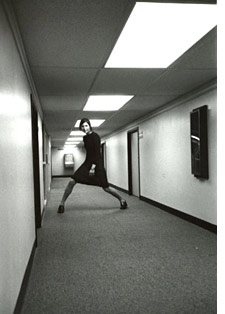In “2001: A Space Odyssey,” a prehistoric man launches a bone high into the sky. The bone spins through the air and, with a brilliant associative cut, the scene jumps to a space station rotating among the stars. Beginning with a gesture and ending with a stretch of the imagination, Stanley Kubrick creates an indelible metaphor for human possibility and achievement. The five members of the San Francisco band Tarentel were so impressed by Kubrick’s vision that they named their first full-length album, “From Bone to Satellite,” after the scene.
Tarentel — named after the tarantella, the Italian folk dance — draw from experimental and avant-garde music and film scores of the ’70s. Their cinematic music is entirely instrumental; song titles are the only words used by the band. While lyrics are limited by vocabulary, music can elicit a meditative experience that listeners can use to conjure their own images. With a dialogue of instruments spanning five tracks and 74 minutes, Tarentel sketch man as lonely cowboy, nervous and astrological dreamer. If the album falls short of the stars, the band lands on its feet with confidence.
“Steede Bonnet” captures the pride of a wandering cowboy in the wilderness as Jefre Cantu’s pulsing six-string weaves in and out of a fumbling guitar and percussion drone. The track recalls the wistful spirit of Ennio Morricone’s spaghetti-Western scores, most notably “Once Upon a Time in the West.”
“When We Almost Killed Ourselves” and “Ursa Minor, Ursa Major” alternate between anxiety and passivity, whispery guitar and noisy bravado. Even at their loudest, Tarentel refrain from overindulging; their music always returns to a sobering dreaminess.
Using sounds instead of words, sympathy rather than empathy, the album is an impressive debut that explores the hope and fears of man. Paradoxically, its ambition ultimately becomes its weakness: Extended passages of instrumental tomfoolery can wear on any listener.
Still, “For Carl Sagan,” the album’s centerpiece, evokes the curiosity, discovery and excitement of anyone who has dared to dream. It’s a breathtaking epic that concludes in spectacular fashion, chilling with every cymbal crush. The composition swells with passion and optimism, an ode to one man and everyman — those whose imaginations have changed bones into satellites.

